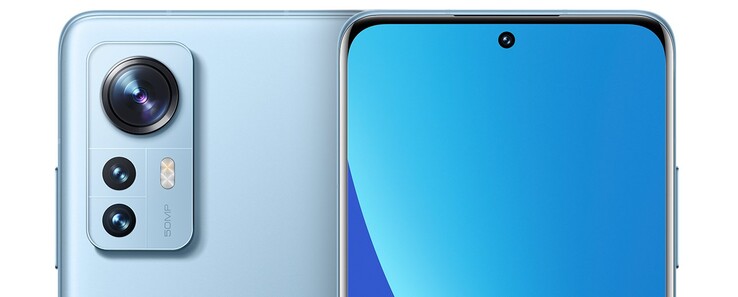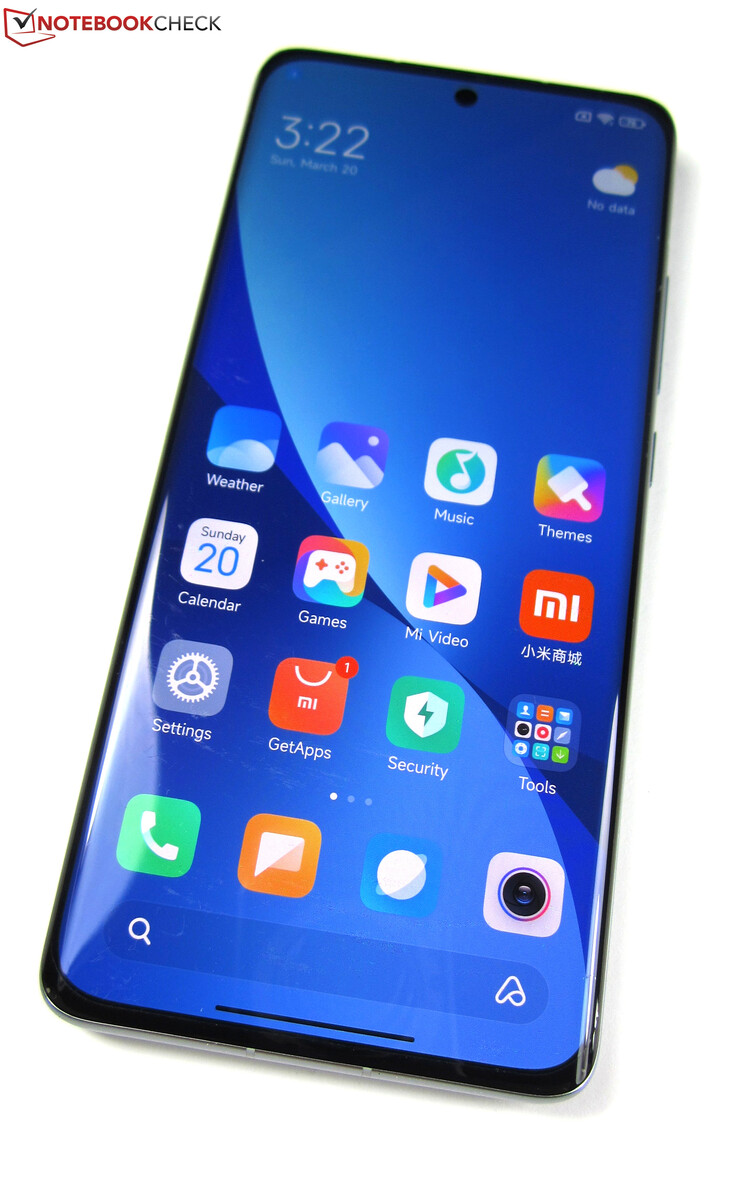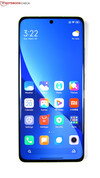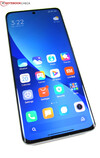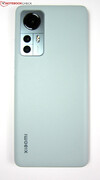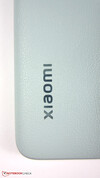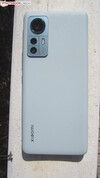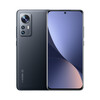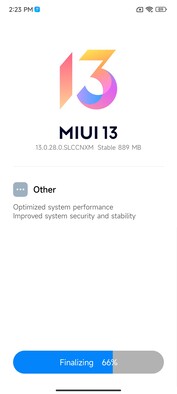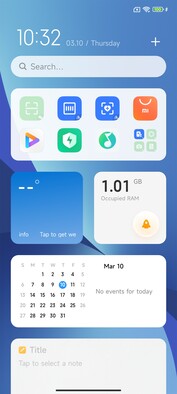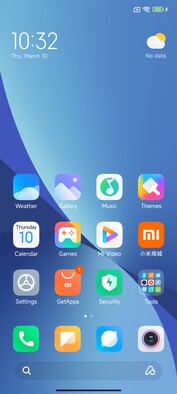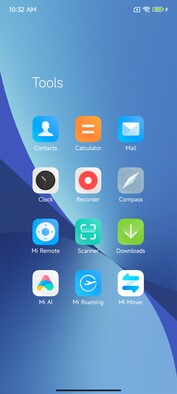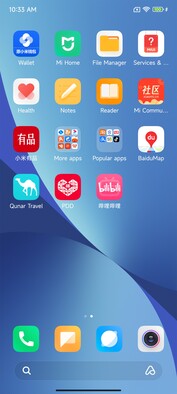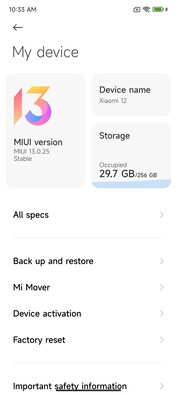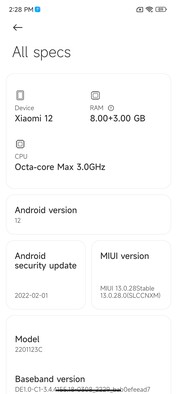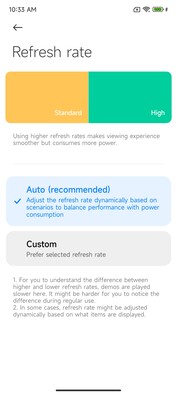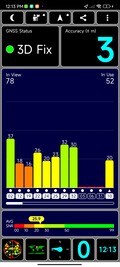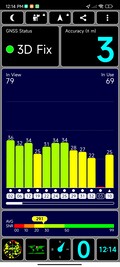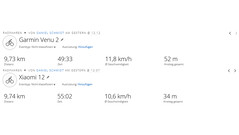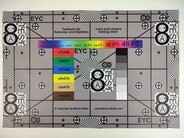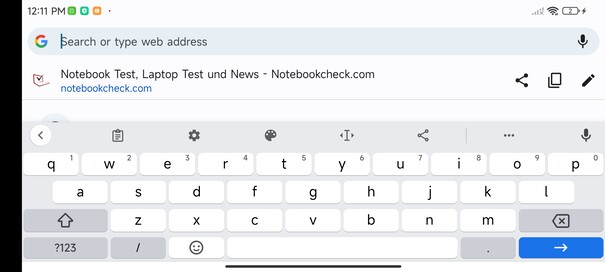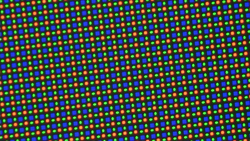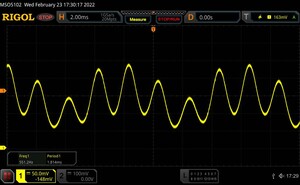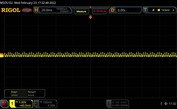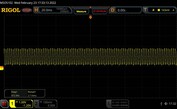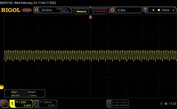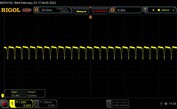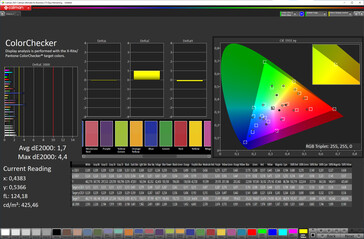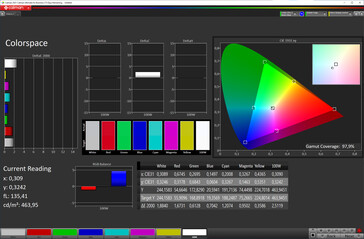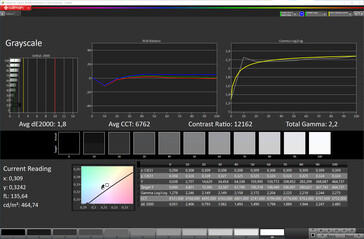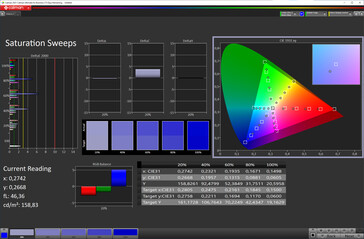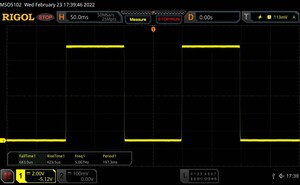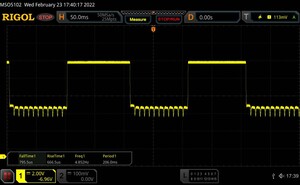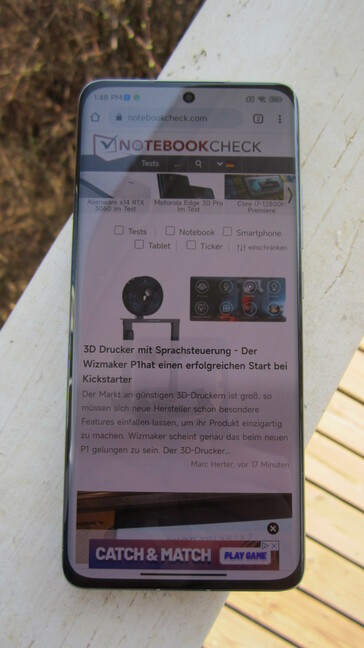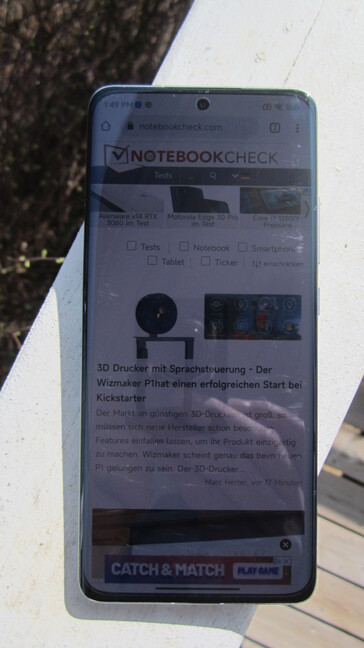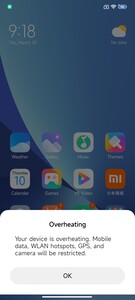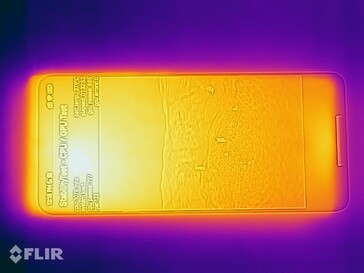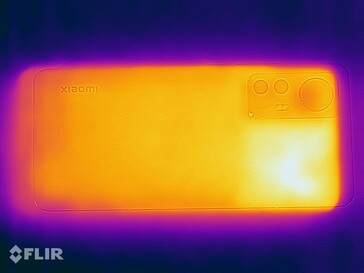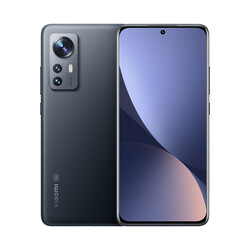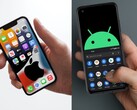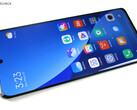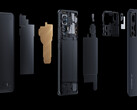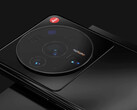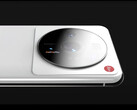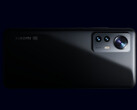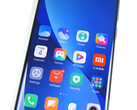Xiaomi 12 smartphone review - A compact and powerful premium package
Xiaomi introduced its new smartphone generation: The Xiaomi 12 series replaces the models of the 11 series and is available in three different versions. In addition to the Xiaomi 12X and Xiaomi 12 Pro, the manufacturer also offers a standard version of its flagship model with the Xiaomi 12. This is the model that we are evaluating here.
Despite its flagship genes, the Xiaomi 12 is a relatively compact smartphone. Its curved display measures 6.28 inches and its size comes close to the Apple iPhone 13. With its Snapdragon 8 Gen 1 from Qualcomm, the Xiaomi 12 belongs to the powerful elite in terms of the SoC performance, and the workmanship and remaining equipment also shows that it plays at the top. However, for Xiaomi's asking price of at least 850 Euros (~$949), this would also be a requirement.
Possible Competitors in Comparison
Rating | Date | Model | Weight | Drive | Size | Resolution | Price |
|---|---|---|---|---|---|---|---|
| 87.7 % v7 (old) | 03 / 2022 | Xiaomi 12 SD 8 Gen 1, Adreno 730 | 179 g | 256 GB UFS 3.1 Flash | 6.28" | 2400x1080 | |
| 88.7 % v7 (old) | 10 / 2021 | Apple iPhone 13 A15, A15 GPU 4-Core | 173 g | 128 GB NVMe | 6.10" | 2532x1170 | |
| 87.4 % v7 (old) | 11 / 2021 | Google Pixel 6 Tensor, Mali-G78 MP20 | 207 g | 128 GB UFS 3.1 Flash | 6.40" | 2400x1080 | |
| 88.8 % v7 (old) | 02 / 2022 | Samsung Galaxy S21 FE 5G SD 888 5G, Adreno 660 | 177 g | 128 GB UFS 3.1 Flash | 6.40" | 2340x1080 | |
| 87.1 % v7 (old) | 10 / 2021 | Sony Xperia 5 III SD 888 5G, Adreno 660 | 168 g | 128 GB UFS 3.0 Flash | 6.10" | 2520x1080 | |
| 87.6 % v7 (old) | 02 / 2022 | Xiaomi 12 Pro SD 8 Gen 1, Adreno 730 | 204 g | 256 GB UFS 3.1 Flash | 6.73" | 3200x1440 |
Case - Faux leather back cover only for the Chinese version
The Xiaomi 12 uses an AMOLED panel that is protected by Gorilla Glass Victus and houses a punch hole camera. The display edges are curved, transitioning without any gaps into the matte aluminum frame and back cover which is also curved. Not only does this look very elegant, but it also offers a high-quality feel throughout. However, we were able to produce some creaking noises from the faux leather back cover of our imported version during some only moderate attempts of twisting.
The exterior of the Xiaomi 12 looks exactly like that of the Xiaomi 12X down to the smallest detail. Both smartphones have the same size and also use the same design language. Only the Xiaomi 12 Pro, the top model of the 12 series, is easily distinguishable. Even though it uses the same design, with its 6.73 inches, it is much larger than the Xiaomi 12 and Xiaomi 12X that both measure 6.28 inches. None of the Xiaomi 12 models offers an IP certification.
The Xiaomi 12 is available in blue, gray, and purple color versions. The back cover is made of matte glass that has a slightly rough feel and doesn't show any fingerprints. The Chinese version also adds a fourth color version, which is also that of our test unit: it has a green back cover made of faux leather. While the appearance is as always a matter of taste, one argument for the faux leather version is that it makes the smartphone less slippery compared to the glass versions.
Equipment - 8 GB of RAM and up to 256 GB storage in the Xiaomi 12
The Xiaomi 12 uses 8 GB of LPDDR5 RAM and optionally offers 128 or 256 GB of UFS 3.1 storage. Since Xiaomi didn't equip its smartphone with a microSD slot, you cannot expand the storage. While there is also no audio port, you can use the included 3.5-mm adapter with the USB-C port. That also supports USB OTG and with this also allows you to connect peripheral devices. However, it is limited to USB-2.0 speeds for data transfer. The smartphone also supports Bluetooth 5.2, NFC, and includes an IR blaster.
Software - Android 12 and MIUI 13
The Xiaomi 12 uses Android 12 in combination with Xiaomi's in-house MIUI 13 user interface. At the time of this test (mid-March), the Android security patches are at the level of February 2022, which makes them fairly current.
In our Chinese test unit, the language selection is optimized for the Asian countries, so that most other users will probably have to choose English as the system language. You can install the missing Play Store without any problems, since all the services needed for Google's app store are already installed on the Xiaomi 12. The Chinese apps can all be uninstalled, and the Chinese keyboard can be replaced by Google Gboard, for example. If you purchase the global version of the Xiaomi, you naturally won't need to perform such localization tasks.
Communication and GNSS - Very fast WiFi 6E
The import version that we tested lacks the 4G band 20 that is important in Germany, but this limitation should not be there for the global version of the Xiaomi 12. If you buy the smartphone in the Xiaomi shop, band 20 is of course included.
For communication in the WLAN net, the Xiaomi 12 supports all the usual WiFi standards including WiFi 6E and uses the MIMO antenna technology. When we use a WiFi-6E compatible router such as our Asus ROG Rapture GT-AXE11000 reference device, the Xiaomi 12 shows very fast WLAN transfer rates at up to 1751 Mbit/s in our test. With WiFi 6 in the 5-GHz net, the data rates remain constant in combination with the Asus router but compared to WiFi 6E, the rates are halved.
| Networking | |
| iperf3 transmit AX12 | |
| Apple iPhone 13 | |
| Google Pixel 6 | |
| Sony Xperia 5 III | |
| iperf3 receive AX12 | |
| Google Pixel 6 | |
| Sony Xperia 5 III | |
| Apple iPhone 13 | |
| iperf3 transmit AXE11000 | |
| Xiaomi 12 Pro | |
| Xiaomi 12 | |
| Samsung Galaxy S21 FE 5G | |
| Average of class Smartphone (49.8 - 1828, n=177, last 2 years) | |
| iperf3 receive AXE11000 | |
| Xiaomi 12 Pro | |
| Samsung Galaxy S21 FE 5G | |
| Xiaomi 12 | |
| Average of class Smartphone (52 - 1721, n=177, last 2 years) | |
| iperf3 transmit AXE11000 6GHz | |
| Xiaomi 12 | |
| Average of class Smartphone (508 - 1945, n=94, last 2 years) | |
| iperf3 receive AXE11000 6GHz | |
| Xiaomi 12 | |
| Average of class Smartphone (451 - 1870, n=94, last 2 years) | |
For navigation, the Xiaomi 12 uses the GPS (L1, L5), Galileo (E1, E5a), GLONASS (L1), BeiDou (B1, B1c, B2a), and NavIC (L5) satellite services. In our test, the smartphone determines its current location with an accuracy of 3 meters (10 ft).
The accuracy also remains high in our practical test, where we take the smartphone on a 10-km (~6.2 miles) bike ride. The Xiaomi 12 records our test route almost as accurately as the Garmin Venu 2 professional navigation device. While we do see some larger deviations in very densely populated route sections at times, this does not take away from its good navigation characteristics.
Telephone Functions and Voice Quality
The Xiaomi 12 delivers good voice quality. During our test calls, the voices sound natural and the conversation partners are also able to understand each other in louder surroundings. If the surrounding noises remain within limits, the communication poses no problems in speaker mode as well. Both SIM slots support VoLTE and WLAN calling.
Cameras - Sony IMX766 with 50 MP
The Xiaomi 12 uses the same camera setup as the Xiaomi 12X. There is a 32-MP selfie camera in front, which delivers good image quality under sufficient light conditions and includes some optional beauty filters to make faces look nicer. It is able to record videos in up to 1080p at 60 frames per second.
The main camera includes the 50-MP Sony IMX766 sensor and optical image stabilization. In the default setting, the four neighboring pixels are combined into one larger pixel, resulting in 12 MP photos. Alternatively, you can also use the full 50 MP. The central one of the three lenses hides a 5-MP macro camera that is able to take sharp pictures within a closeup range between 3 and 7 cm (~1.2 - 2.8 in). The bottom lens houses the 13-MP ultrawide angle lens with a 123-degree viewing angle. It takes good pictures and hardly shows any chromatic aberrations in the edge areas.
In daylight conditions, the main camera also takes good pictures, which show a lot of details and also possess a balanced color reproduction in most situations. However, as you can see in our test scenes 1 and 3, at times the Xiaomi 12 reproduces colors too saturated, making the pictures appear very vivid but also slightly unnatural. In pictures taken with digital zoom, the objects remain very sharp due to the optical image stabilization, as long as you don't enlarge the pictures themselves. In combination with the night mode, the main camera is also able to take some atmospheric pictures in low light conditions.
Video recordings are stabilized reliably and look really good. They can be recorded at 24 FPS in a maximum resolution of 8K. With 4K and 30 FPS (up to 60 FPS are supported), you can switch between the main and the ultrawide angle lens.
Image comparison
Choose a scene and navigate within the first image. One click changes the position on touchscreens. One click on the zoomed-in image opens the original in a new window. The first image shows the scaled photograph of the test device.
Daylight 1Daylight 2Ultra wide-angle5x ZoomLowlightUnder controlled light conditions in the lab, we can see that the main camera is unable to reproduce colors optimally even under the best possible light conditions (top ColorChecker card), since some of the color deviations show a Delta E above 12. In weak light conditions (bottom color card), the color accuracy decreases even further. However, the Sony sensor is still able to capture a relatively high amount of light, allowing you to recognize all the elements of our test chart.
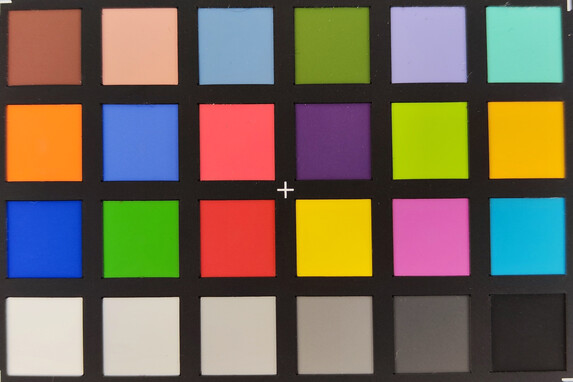
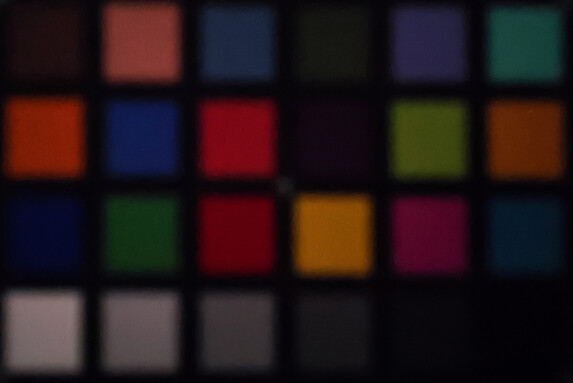
Accessories and Warranty - 67-Watt charger included
The box of the Xiaomi 12 includes a 67-watt charger, USB cable (Type C to A), SIM tool, protective case, quick start manual, and warranty card. Xiaomi doesn't offer any specific accessories for its smartphone, but you can still purchase other articles such as Bluetooth speakers in the online shop of the manufacturer.
TradingShenzhen, who lent us our test unit, offers a 12-month warranty on the import version of the Xiaomi 12. If you purchase the global version of the smartphone in the Xiaomi shop, you receive a 24-month warranty. Within the first 6 months, a free replacement of the display is also included.
Input Devices and Operation - An accurate and responsive touchscreen
The Xiaomi 12 can be operated very smoothly, always giving the impression that it can handle any task that you might want to throw at it. The 20:9 display runs with a scanning rate of up to 480 Hz and implements the touch commands without any noticeable delay, scanning very accurately up to the corners.
The slim bezels of the curved panel still leave sufficient space for the fingers to hold on, so there is only rarely any accidental input. On the other hand, we found the protective foil that was installed in the state of delivery less than optimal. While it still follows the curved display contours, covering the whole display except for a very small strip on the edges, we can feel a fairly noticeable hard edge in the transition between the foil and the display.
You can unlock the Xiaomi 12 biometrically via 2D face recognition or the optical fingerprint sensor that is hidden beneath the display. Both methods work quickly and reliably.
Display - A very fast AMOLED panel with HDR10+ and Dolby Vision
The 6.28-inch AMOLED display of the Xiaomi 12 has a 2400 x 1080 pixel resolution. This corresponds to a pixel density of 419 PPI, which guarantees a sharp image display. In the standard setting, the refresh rate automatically switches between 60 and 120 Hz, depending on the displayed content. Alternatively, you can also fix it to one of the two values.
With a white image display, the AMOLED display reaches a brightness of 867 cd/m² on average, also scoring with a very homogenous brightness distribution. In the APL50 mode (with evenly distributed bright and dark image areas), the brightness increases up to 998 cd/m². With the brightness sensor deactivated, the maximum possible is 482 cd/m². In the lowest brightness level, the display is illuminated at 2.16 cd/m².
The AMOLED display controls its brightness via pulse width modulation (PWM), flickering within a frequency range between 162.4 and 551.2 Hz at brightness levels of 50% or lower. Above that, the PWM flickering occurs at a constant 60 or 120 Hz respectively.
| |||||||||||||||||||||||||
Brightness Distribution: 98 %
Center on Battery: 867 cd/m²
Contrast: ∞:1 (Black: 0 cd/m²)
ΔE ColorChecker Calman: 1.7 | ∀{0.5-29.43 Ø4.78}
ΔE Greyscale Calman: 1.8 | ∀{0.09-98 Ø5}
100% sRGB (Calman 2D)
Gamma: 2.2
CCT: 6762 K
| Xiaomi 12 OLED, 2400x1080, 6.3" | Apple iPhone 13 OLED, 2532x1170, 6.1" | Google Pixel 6 OLED, 2400x1080, 6.4" | Samsung Galaxy S21 FE 5G Dynamic AMOLED 2X, 2340x1080, 6.4" | Sony Xperia 5 III OLED, 2520x1080, 6.1" | Xiaomi 12 Pro AMOLED, 3200x1440, 6.7" | |
|---|---|---|---|---|---|---|
| Screen | 24% | 3% | -2% | -40% | 14% | |
| Brightness middle (cd/m²) | 867 | 831 -4% | 805 -7% | 758 -13% | 554 -36% | 959 11% |
| Brightness (cd/m²) | 867 | 830 -4% | 805 -7% | 758 -13% | 559 -36% | 977 13% |
| Brightness Distribution (%) | 98 | 98 0% | 98 0% | 99 1% | 95 -3% | 96 -2% |
| Black Level * (cd/m²) | ||||||
| Colorchecker dE 2000 * | 1.7 | 0.77 55% | 1.4 18% | 1.5 12% | 2.22 -31% | 1.1 35% |
| Colorchecker dE 2000 max. * | 4.4 | 1.52 65% | 3.7 16% | 3.1 30% | 5.94 -35% | 3.1 30% |
| Greyscale dE 2000 * | 1.8 | 1.2 33% | 1.8 -0% | 2.3 -28% | 3.6 -100% | 1.9 -6% |
| Gamma | 2.2 100% | 2.209 100% | 2.29 96% | 2.06 107% | 2.193 100% | 2.22 99% |
| CCT | 6762 96% | 6501 100% | 6507 100% | 6378 102% | 7000 93% | 6498 100% |
* ... smaller is better
Screen Flickering / PWM (Pulse-Width Modulation)
| Screen flickering / PWM detected | 551 Hz | ||
The display backlight flickers at 551 Hz (worst case, e.g., utilizing PWM) . The frequency of 551 Hz is quite high, so most users sensitive to PWM should not notice any flickering. In comparison: 53 % of all tested devices do not use PWM to dim the display. If PWM was detected, an average of 8098 (minimum: 5 - maximum: 343500) Hz was measured. | |||
The Xiaomi 12 supports HDR10+ and Dolby Vision. The default "Vivid" color mode is adjusted to this, covering the DCI-P3 color space, which is significantly larger compared to sRGB. As our measurements with the colorimeter and the CalMAN software show, the "Vivid" color mode is also a very good choice in general, since using that, the Xiaomi 12 remains within the ideal target range in the color and grayscale reproduction as well as in the color temperature and RGB balance.
Display Response Times
| ↔ Response Time Black to White | ||
|---|---|---|
| 1.307 ms ... rise ↗ and fall ↘ combined | ↗ 0.624 ms rise | |
| ↘ 0.683 ms fall | ||
| The screen shows very fast response rates in our tests and should be very well suited for fast-paced gaming. In comparison, all tested devices range from 0.1 (minimum) to 240 (maximum) ms. » 6 % of all devices are better. This means that the measured response time is better than the average of all tested devices (20.2 ms). | ||
| ↔ Response Time 50% Grey to 80% Grey | ||
| 1.462 ms ... rise ↗ and fall ↘ combined | ↗ 0.667 ms rise | |
| ↘ 0.796 ms fall | ||
| The screen shows very fast response rates in our tests and should be very well suited for fast-paced gaming. In comparison, all tested devices range from 0.165 (minimum) to 636 (maximum) ms. » 6 % of all devices are better. This means that the measured response time is better than the average of all tested devices (31.6 ms). | ||
Performance - A fast Snapdragon 8 Gen 1
The Xiaomi 12 uses Qualcomm's new Snapdragon 8 Gen 1 top SoC, which is also included in the Xiaomi 12 Pro flagship of the 12 series. In the Xiaomi 12, the processor is accompanied by 8 GB of LPDDR5 RAM and the integrated Adreno 730 graphics unit, making this really powerful hardware overall.
In the synthetic benchmarks, the Xiaomi 12 runs overall faster than Android smartphones with the Snapdragon 888, which is by no means slow. However, the difference to the predecessor is only small, particularly in CPU heavy tests. Compared to the Snapdragon 8 Gen 1, the performance of the Tensor SoC in the Google Pixel 6 is significantly slower. Even the Apple iPhone 13 cannot quite keep up, but it follows much closer behind the Xiaomi 12 than the Android smartphones.
However, the Xiaomi 12 is still unable to completely convince us, since it remains miles behind the competitors in AImark, despite the activated performance mode. Even repeating the runs and inserting long cooling periods don't change this bad result in the AI benchmark. Interestingly, the Google Pixel 6 also doesn't do any better here.
| AImark - Score v2.x | |
| Sony Xperia 5 III | |
| Apple iPhone 13 | |
| Xiaomi 12 Pro | |
| Average Qualcomm Snapdragon 8 Gen 1 (1046 - 96317, n=14) | |
| Xiaomi 12 | |
| Google Pixel 6 | |
| Samsung Galaxy S21 FE 5G | |
The Xiaomi 12 does an excellent job in the browser benchmarks. Even complex websites are rendered quickly and can be scrolled smoothly. However, there still is no Android smartphone that is able to reach the browser performance of the Apple iPhone 13.
| Jetstream 2 - 2.0 Total Score | |
| Apple iPhone 13 (Safari 15) | |
| Average of class Smartphone (23.8 - 387, n=149, last 2 years) | |
| Sony Xperia 5 III (Chrome93) | |
| Xiaomi 12 (Chrome 99.0.4844.58) | |
| Average Qualcomm Snapdragon 8 Gen 1 (72.8 - 134.6, n=16) | |
| Google Pixel 6 (Chrome 96) | |
| Xiaomi 12 Pro (Chrome 97) | |
| Samsung Galaxy S21 FE 5G (Chrome 96) | |
| JetStream 1.1 - Total Score | |
| Apple iPhone 13 (Safari 15) | |
| Xiaomi 12 (Chrome 99.0.4844.58) | |
| Sony Xperia 5 III (Chrome93) | |
| Average Qualcomm Snapdragon 8 Gen 1 (121.9 - 237, n=11) | |
| Google Pixel 6 (Chrome 96) | |
| Xiaomi 12 Pro (Chrome 97) | |
| Samsung Galaxy S21 FE 5G (Chrome 96) | |
| Speedometer 2.0 - Result 2.0 | |
| Apple iPhone 13 (Safari 15) | |
| Average of class Smartphone (15.2 - 643, n=122, last 2 years) | |
| Xiaomi 12 (Chrome 99.0.4844.58) | |
| Google Pixel 6 (Chrome 96) | |
| Average Qualcomm Snapdragon 8 Gen 1 (64.4 - 129.3, n=16) | |
| Xiaomi 12 Pro (Chrome 97) | |
| Samsung Galaxy S21 FE 5G (Chrome 96) | |
| WebXPRT 3 - Overall | |
| Apple iPhone 13 (Safari 15) | |
| Average of class Smartphone (38 - 380, n=31, last 2 years) | |
| Xiaomi 12 (Chrome 99.0.4844.58) | |
| Average Qualcomm Snapdragon 8 Gen 1 (79 - 193, n=15) | |
| Samsung Galaxy S21 FE 5G (Chrome 96) | |
| Xiaomi 12 Pro (Chrome 97) | |
| Google Pixel 6 (Chrome 96) | |
| Octane V2 - Total Score | |
| Apple iPhone 13 (Safari 15) | |
| Average of class Smartphone (2228 - 121337, n=197, last 2 years) | |
| Sony Xperia 5 III (Chrome93) | |
| Google Pixel 6 (Chrome 96) | |
| Average Qualcomm Snapdragon 8 Gen 1 (27730 - 50626, n=17) | |
| Xiaomi 12 (Chrome 99.0.4844.58) | |
| Samsung Galaxy S21 FE 5G (Chrome 96) | |
| Xiaomi 12 Pro (Chrome 97) | |
| Mozilla Kraken 1.1 - Total | |
| Samsung Galaxy S21 FE 5G (Chrome 96) | |
| Xiaomi 12 Pro (Chrome 97) | |
| Average of class Smartphone (257 - 28190, n=154, last 2 years) | |
| Google Pixel 6 (Chrome 96) | |
| Average Qualcomm Snapdragon 8 Gen 1 (814 - 1440, n=16) | |
| Xiaomi 12 (Chrome 99.0.4844.58) | |
| Sony Xperia 5 III (Chrome93) | |
| Apple iPhone 13 (Safari 15) | |
* ... smaller is better
The UFS 3.1 storage of the Xiaomi 12 ensures quick load times with its high sequential read rate. It also offers a powerful performance in the sequential writes and the 4 KB random reads/writes that none of the Android rivals such as the Google Pixel 6, the Samsung Galaxy S21 FE 5G, and the Sony Xperia 5 III are able to follow.
| Xiaomi 12 | Google Pixel 6 | Samsung Galaxy S21 FE 5G | Sony Xperia 5 III | Xiaomi 12 Pro | Average 256 GB UFS 3.1 Flash | Average of class Smartphone | |
|---|---|---|---|---|---|---|---|
| AndroBench 3-5 | -55% | -34% | -31% | -2% | -15% | 5% | |
| Sequential Read 256KB (MB/s) | 1851 | 1546 -16% | 1639 -11% | 1593 -14% | 1620 -12% | 1757 ? -5% | 2228 ? 20% |
| Sequential Write 256KB (MB/s) | 1417 | 233.4 -84% | 760 -46% | 740 -48% | 1465 3% | 1204 ? -15% | 1852 ? 31% |
| Random Read 4KB (MB/s) | 325.2 | 126.2 -61% | 245.1 -25% | 253.4 -22% | 324.9 0% | 287 ? -12% | 296 ? -9% |
| Random Write 4KB (MB/s) | 437.5 | 190.3 -57% | 211.2 -52% | 271.3 -38% | 448.9 3% | 318 ? -27% | 339 ? -23% |
Games - Gaming with the brakes engaged
With the high-end Adreno 730 graphics unit, its 120-Hz screen, and the stereo speakers optimized by Harman Kardon, the Xiaomi 12 brings the best qualifications for gaming. However, the smartphone is still unable to inspire much enthusiasm when gaming. While the current games run smoothly, the frame rates are not what we had hoped for, at least in our selection of test games.
In "Asphalt 9: Legends," we are unable to get more than 30 FPS from the smartphone, even though it should have sufficient performance reserves for significantly higher frame rates. In the graphically simple "Armajet," the Xiaomi 12 should really show what its 120-Hz screen is capable of, but on average it manages less than 50 FPS, which is a disappointing result. We suspect that the high heat development of the Snapdragon 8 Gen 1 spoils the performance of the smartphone, causing the need to throttle the performance.
We measure the frame rates with our Gamebench test tool.
Emissions - High-end SoC with heat problems
Temperatures
In practice, the benefit that users get from the high performance of the Snapdragon 8 Gen 1 is limited, since the smartphone is plagued by heat problems. In the test, this resulted in the need to take a longer break after each benchmark in order to allow the smartphone to cool down sufficiently. If we left out the break, there would be more throttling, leading to a significantly worse benchmark score.
The thermal problem is also reflected in the Wild Life stress test from 3DMark. The maximum performance is only reached in the beginning, before the performance drops quickly, dropping to about half of the beginning level in repeated renderings of the test scenario. The Xiaomi 12 even stops the Wild Life Extreme stress test with an overheating error message. The smartphone also broke off each of the stress tests of GFXBench with an error message. The Xiaomi 12 Pro also struggles with the same difficulties in terms of the temperature.
On the other hand, it is likely that you'd hardly notice any of the throttling in everyday operation. At a maximum temperature of 37.4 °C (99 °F), the Xiaomi 12 never felt uncomfortable to hold, and despite our measured lower performance, it never felt any slower. However, it still remains to be seen whether this is still the case with summer temperatures outside or whether the performance drop will then become more noticeable.
(+) The maximum temperature on the upper side is 37 °C / 99 F, compared to the average of 35.2 °C / 95 F, ranging from 21.9 to 247 °C for the class Smartphone.
(+) The bottom heats up to a maximum of 37.4 °C / 99 F, compared to the average of 34 °C / 93 F
(+) In idle usage, the average temperature for the upper side is 30.3 °C / 87 F, compared to the device average of 32.9 °C / 91 F.
3DMark Wild Life Stress Test
| 3DMark - Wild Life Stress Test Stability | |
| Apple iPhone 13 | |
| Sony Xperia 5 III | |
| Samsung Galaxy S21 FE 5G | |
| Google Pixel 6 | |
| Xiaomi 12 Pro | |
| Xiaomi 12 | |
Speakers
The Xiaomi 12 uses stereo speakers from Harman Kardon that are placed on the two short sides of the smartphone. Their sound impresses with balanced mids and highs that are able to reproduce language particularly well. On the other hand, it lacks the bass frequencies, which also makes the sound a bit thin overall.
While the Xiaomi 12 lacks an audio port, you can use the included USB-C adapter instead. You can also connect a headset or external speakers wirelessly via Bluetooth 5.2.
Xiaomi 12 audio analysis
(+) | speakers can play relatively loud (90.7 dB)
Bass 100 - 315 Hz
(-) | nearly no bass - on average 19.3% lower than median
(±) | linearity of bass is average (8.2% delta to prev. frequency)
Mids 400 - 2000 Hz
(±) | higher mids - on average 5% higher than median
(+) | mids are linear (4.7% delta to prev. frequency)
Highs 2 - 16 kHz
(±) | higher highs - on average 7.5% higher than median
(+) | highs are linear (4.7% delta to prev. frequency)
Overall 100 - 16.000 Hz
(±) | linearity of overall sound is average (17.3% difference to median)
Compared to same class
» 11% of all tested devices in this class were better, 8% similar, 81% worse
» The best had a delta of 11%, average was 35%, worst was 134%
Compared to all devices tested
» 31% of all tested devices were better, 8% similar, 60% worse
» The best had a delta of 4%, average was 24%, worst was 134%
Xiaomi 12 Pro audio analysis
(+) | speakers can play relatively loud (84.2 dB)
Bass 100 - 315 Hz
(-) | nearly no bass - on average 18.8% lower than median
(±) | linearity of bass is average (12.9% delta to prev. frequency)
Mids 400 - 2000 Hz
(+) | balanced mids - only 4.2% away from median
(+) | mids are linear (4.4% delta to prev. frequency)
Highs 2 - 16 kHz
(+) | balanced highs - only 3.1% away from median
(+) | highs are linear (6.8% delta to prev. frequency)
Overall 100 - 16.000 Hz
(+) | overall sound is linear (14.8% difference to median)
Compared to same class
» 2% of all tested devices in this class were better, 2% similar, 96% worse
» The best had a delta of 11%, average was 35%, worst was 134%
Compared to all devices tested
» 19% of all tested devices were better, 4% similar, 77% worse
» The best had a delta of 4%, average was 24%, worst was 134%
Battery Life - Wireless charging at up to 50 watts
Power Consumption
The Xiaomi 12 includes a 67-watt charger. With this, the 4500-mAh battery can be completely recharged in less than 50 minutes. In our test, it reaches 80% after 30 minutes.
In addition to wired quick charging, the Xiaomi 12 also supports wireless charging at 50 watts. Reverse wireless charging at 10 watts is also supported, so it can also recharge other devices wirelessly.
The power consumption of the Xiaomi 12 is average.
| Off / Standby | |
| Idle | |
| Load |
|
Key:
min: | |
| Xiaomi 12 4500 mAh | Apple iPhone 13 3240 mAh | Google Pixel 6 4614 mAh | Samsung Galaxy S21 FE 5G 4500 mAh | Sony Xperia 5 III 4500 mAh | Xiaomi 12 Pro 4600 mAh | Average Qualcomm Snapdragon 8 Gen 1 | Average of class Smartphone | |
|---|---|---|---|---|---|---|---|---|
| Power Consumption | 20% | 14% | -7% | -60% | 3% | -24% | -15% | |
| Idle Minimum * (Watt) | 0.87 | 0.6 31% | 0.68 22% | 1.01 -16% | 1.8 -107% | 0.94 -8% | 1.255 ? -44% | 0.842 ? 3% |
| Idle Average * (Watt) | 1.7 | 1 41% | 1 41% | 1.5 12% | 2.6 -53% | 1.24 27% | 2.02 ? -19% | 1.439 ? 15% |
| Idle Maximum * (Watt) | 1.82 | 1.3 29% | 1.02 44% | 1.6 12% | 3.1 -70% | 1.34 26% | 2.21 ? -21% | 1.624 ? 11% |
| Load Average * (Watt) | 4.68 | 4.5 4% | 5.39 -15% | 5.54 -18% | 5.3 -13% | 5.7 -22% | 5.49 ? -17% | 7.03 ? -50% |
| Load Maximum * (Watt) | 7.41 | 7.8 -5% | 9 -21% | 9.16 -24% | 11.5 -55% | 8.12 -10% | 8.75 ? -18% | 11.3 ? -52% |
* ... smaller is better
Power Consumption: Geekbench (150 cd/m²)
Power Consumption: GFXBench (150 cd/m²)
Battery Life
The 4500-mAh battery provides the Xiaomi 12 with a good battery life. In our simulated web surfing, it lasts for 12:40 hours, and its screen only turns dark after almost 15 hours of playing a video. Among our comparison devices, only the Apple iPhone 13 lasts even slightly longer, while the Xiaomi 12 Pro doesn't last quite as long with its larger display.
We ran the battery tests using a refresh rate fixed to 120 Hz. Using 60 Hz or the automatic setting that dynamically switches between 60 and 120 Hz, you should even get a slightly longer battery life.
| Xiaomi 12 4500 mAh | Apple iPhone 13 3240 mAh | Google Pixel 6 4614 mAh | Samsung Galaxy S21 FE 5G 4500 mAh | Sony Xperia 5 III 4500 mAh | Xiaomi 12 Pro 4600 mAh | |
|---|---|---|---|---|---|---|
| Battery runtime | 14% | -6% | -15% | -5% | -11% | |
| Reader / Idle (h) | 42.6 | 45.6 7% | 33.7 -21% | 23.8 -44% | 33.9 -20% | |
| H.264 (h) | 14.8 | 20.4 38% | 20.3 37% | 15.6 5% | 13.1 -11% | |
| WiFi v1.3 (h) | 12.7 | 17 34% | 10.5 -17% | 9.9 -22% | 12.1 -5% | 12.8 1% |
| Load (h) | 6.4 | 5 -22% | 4.9 -23% | 6.5 2% | 5.6 -12% |
Pros
Cons
Verdict on the Xiaomi 12
The Xiaomi 12 is a very good smartphone with powerful equipment and performance. The performance of the smaller 6.28-inch Xiaomi 12 is just as good as that of the Xiaomi 12 Pro top model, since both use the Snapdragon 8 Gen 1. In terms of battery life, our test unit is even able to beat the flagship, since that has a higher power consumption due to its larger 6.73-inch display.
Other positive characteristics of the Xiaomi 12 are the high-quality design, the bright AMOLED display with accurate colors, the fast and accurate GPS, the very fast WiFi-6E speed, the short charging time, and wireless charging at 50 watts. The 50-MP camera almost looks a bit worse in comparison, since it only delivers good but not the very best pictures for this price class.
The Xiaomi 12 is a compact and very elegant smartphone with plenty of performance. However, unfortunately it is also often unable to use all of it.
The Xiaomi 12 has to accept some complaints about its cooling. Although the Snapdragon 8 Gen 1 delivers impressive benchmark results, it struggles with heat problems. When the internals of the smartphone become too hot, which unfortunately happens very quickly, the SoC performance drops significantly. The Xiaomi 12X does a better job here. Although that delivers more than sufficient performance for everyday usage with the Snapdragon 870, it hardly ever has to start throttling.
Finally, we also have to complain about the lack of IP certification for the Xiaomi 12, as well as the lack of an option to expand the internal storage. However, the smartphone also shares these disadvantages with the Xiaomi 12X and the Xiaomi 12 Pro.
An alternative to the Xiaomi 12 is the Xiaomi 12X. It looks exactly the same outside, uses an identical camera setup, and also offers a very bright 120-Hz display. Due to its more efficient Snapdragon 870, it even bests the battery life of the Xiaomi 12 significantly. On the other hand, the disadvantages are that the Xiaomi 12X only starts out with Android 11 instead of Android 12 and supports neither wireless charging nor reverse wireless charging. Other alternatives to the Xiaomi 12 are the Sony Xperia 5 III and the Apple iPhone 13.
Price and Availability
The Xiaomi 12 is available from importers such as TradingShenzhen starting from $664 with the Chinese/English firmware, while the global or EU firmware versions cost $30 more.
Xiaomi 12
- 08/30/2022 v7 (old)
Manuel Masiero




